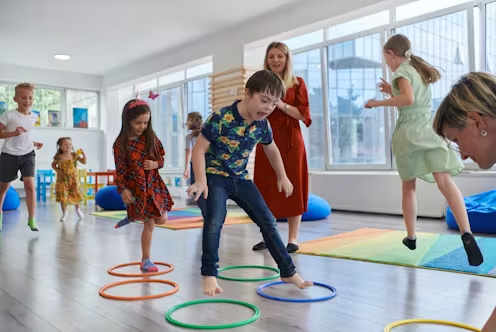Too many disabled young people are missing out on PE – here’s how that could change


The UK government has called on schools to do more to enhance opportunities in PE and sport for disabled young people.
However, the government also has a fundamental role to play here. This is pointed out in a new campaign from ParalympicsGB. In an open letter, the British Paralympic Association has asked the government to work to re-prioritise PE in the curriculum, improve teacher training on inclusive PE, and increase the numbers of disabled people entering teaching.
The campaign follows a documentary aired the day before the opening ceremony for the Paris 2024 Paralympic Games, Equal Play, which was informed by our research. This documentary showcased the PE and sport experiences of two disabled young people: Tammy, an 11-year-old girl from Cambridge, and Marley, a 14-year-old boy from London.
Commissioned by the British Paralympic Association, the documentary aimed to illustrate the challenges disabled young people face in accessing PE and sport opportunities. It also showed the transformative power these opportunities can offer.
Marley and Tammy’s stories, featured in the film, reflect the experiences of many young people who have shared their views with us and other researchers over the last two decades. What we have consistently found is that, too often, disabled children are not afforded the same opportunities as their peers, particularly in mainstream schools.
These children, like Tammy, sometimes have no experience of PE because the steps needed to allow them to take part have not been made.
For many children, their experience of PE may be limited to standing on the sidelines or playing separately from their peers. They may have inappropriate adaptations made for them, which highlight difference and create feelings of social exclusion from others. This could be, for example, starting a race with a head start.
Experiences such as these highlight gaps in initial teacher education and continued professional development. Some PE teachers have spoken of having very little, if any, appropriate and subject specific training relating to disability and inclusion.
However, some children, like Marley, have a very different experience. For young people like him, who attend schools where PE is delivered inclusively, where their needs are accommodated and their strengths are recognised, the experience of PE is inclusive, equitable and enjoyable.
However, his experience seems to be largely in the minority. This raises serious questions about the precarious nature of inclusive PE and school sport provision.
Marley’s story also highlights is the important role of parents in helping their children access sport opportunities outside of school. Parents of disabled young people struggle to find appropriate opportunities for their children to get involved in sport outside of school, such as in local sports clubs.
The changes suggested by ParalympicsGB’s Equal Play campaign would be a good start. Teachers need support through training, and there is work for the government to do to make sure PE is appropriately recognised in its curriculum review, as well as in recruiting teachers with disabilities.
But there are also smaller steps which can be taken by schools, teachers and community sport providers. First, schools and community sports clubs need to review what opportunities they currently offer for disabled youth to participate in PE, extra-curricular and community sport.
In doing this, they can make use of a wealth of existing free resources and examples of good practice from organisations such as Activity Alliance, the Youth Sport Trust and Access Sport to develop their inclusive PE and disability sport provision for young people.
In its call to schools to prioritise inclusive PE, the government highlighted its funded inclusion programme, Inclusion 2024. Now in its fourth year, this programme does offer a useful framework for enhancing inclusive PE and school sport provision. It draws on expertise from Lead Inclusion Schools: schools with particular expertise in giving disabled young people opportunities to participate, compete and lead through PE, physical activity and school sport.
Most importantly, however, schools, teachers and community sports clubs need to speak directly with disabled young people and their families. This is key to understanding how to provide sport and PE that meet their needs.
Equitable opportunities cannot be created unless we first understand the experiences and views of disabled people, and so they need to be central to conversations about improving access and opportunity in PE and sport.